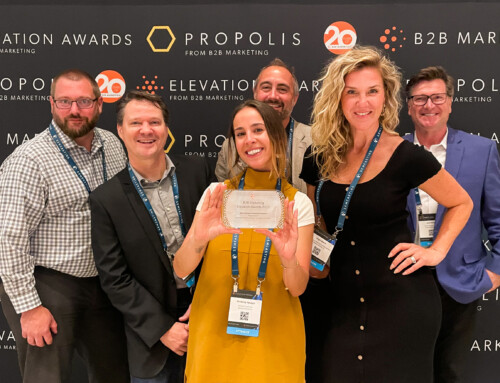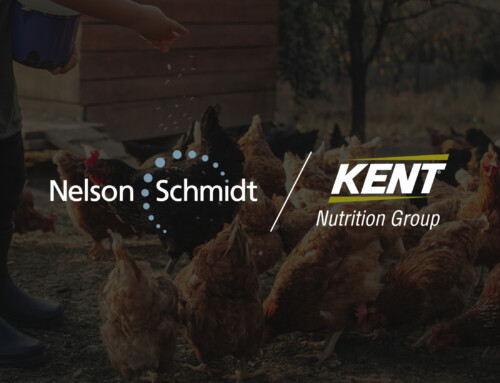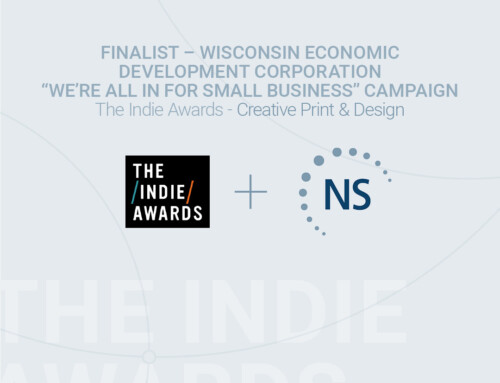This summer I made the trek, along with our CMO Chris Vitrano, to the highly-acclaimed International Festival of Creativity for the first time (nee the Cannes Advertising Festival). It’s an experience everyone in our industry should be privileged to have, if only to be motivated by the unbelievably inspired, cutting-edge work that is being produced all around the world. Its core essence is an awards show, with more than 40,000 entries this year. Though only 1600 Lions were awarded – a 4% success rate – so much of the work was exceptional.

View of the Palais des Festivals and surrounds from the fabulous Facebook “Hacker’s Square” pier and beach.
Literally everywhere were innovative communications concepts and delivery technologies that are changing the way we experience life and work. But it wasn’t the innovative uses of technologies that won awards, as has been the case the past few years – as many of these technologies are no longer new. Instead, 2015 Lions were in large part given to those messages expressing specific corporate values and social responsibilities, oftentimes creatively using technology to deliver those messages.
Six of the 22 Grand Prix’s were awarded to campaigns that conveyed marketers’ respect for women, including P&G’s “Like a Girl” and Under Armour’s “I Will What I Want.” Three Grand Prix’s were focused on safety, two were related to health and nutrition, and several others honored deserving causes, with the ALS Association’s “Ice Bucket Challenge” being one of the most profound examples of all time. Indeed only two of 22 campaigns awarded were pure-play product-focused: Apple’s “Shot with iPhone 6” outdoor campaign and Domino’s “Emoji Ordering” app.
Ad tech: still the life of the party
While technology is no longer enough of a “hook” to win a coveted Lion, unmistakable was ad tech’s impact on the festival. They were prodigious sponsors, if nothing else. At an event historically centered on creativity, artistry and inspiration, the obvious presence of ad tech’s influence felt to some like having cold water poured on the fire. I don’t know who said it, but I overheard someone comment that, “it’s becoming akin to an industrial lighting expo.” In other words: way too technically-focused.
I have to disagree.
While the presence of highly-technical marketing solutions may have had some wondering where all the creativity has gone (along with the good old days), technology has pushed our industry forward in so many ways, and in just as many ways has enabled our creativity versus stifling it. With the right technologies in place, we’re able to focus on our real strengths as agencies: the art of creatively crafting and delivering the right stories, to the right people, in the right way.

“Quality matters” was the message during the Full Frontal Content session featuring a panel of photographers.
With such an abundance of technologies AND the advances in the application of those technologies evolving so quickly, frankly the biggest challenge is knowing which tech-horse(s) to hitch our carts to. Some of these flashing lights will become beacons, while others will simply fade away. Our focus is and will continue to be on consolidation and standardization of the data-based, outcome-based media solutions that enable the delivery of messages at the precise moment of desired customer behaviors. Watch players like Xaxis in this space, particularly given all the challenges traditional media agencies are facing (an important subtext to the Cannes story this year).
Among the myriad technologies on display throughout the festival, a few really stood out to me. Microsoft was there promoting its HaloLens alternative virtual reality concept, which is being billed as “the first fully untethered, see-through holographic computer.” They have taken the approach of producing a “mixed reality,” in which holograms mix with a real world view and (theoretically) become a practical tool for daily life. The applications are endless – healthcare, space exploration, design and construction, to name a few. If you didn’t sign up early, it was impossible to get a private 15-minute demo scheduled.
In terms of advertising, Instagram is hoping to change the way we interact with online display ads through its new Carousel touch ad unit concept. Presented as “a new way for brands to tell deeper stories and share more images with people interested in their posts,” the concept is brilliantly simple. A Carousel ad is essentially one Instagram post with multiple images that users swipe to view one by one (it is natively mobile). In doing so, a flat unit of advertising has become interactive. The idea incorporates some of the most successful concepts from gaming, geography and even dating apps. But after viewing the half-dozen branded ads that Instagram creatively displayed (using old View Masters), it’s clear that a heavy burden is still on the first image, which must not only attract attention but also be compelling enough for users to want (and know) to swipe for more.

Always thought-provoking, TED talks were an inspiring part of the Cannes experience.
Looking over the horizon
One evolving concept we will be watching is the application of neuro-marketing principals to our work. In laymen’s terms, neuro-marketing is a new field of research that studies the cognitive responses to various marketing stimuli. Particularly when it comes to the complex buying behavior of highly considered purchases, neuro-marketing has the capability to uncover meaningful, emotional moments that ultimately drive purchase decisions, often much more so than the functional, rational way marketers most often speak to customers.
Two presentations focused on this emerging field of marketing science. First on Sunday June 21st, Dr. Itiel Dror and Nir Wegrzyn gave a wonderfully compelling talk called “Nailing Jelly to a Tree & Other Wild Goose Chases” to examine the disconnect between how most creative pros are still working with the underlying assumption that the consumer is rational…and thus basically rendering much of their work ineffective.
Then on Friday June 26th from the Experience Stage, as part of the first-ever Cannes Lions Innovation Festival (within a festival), Thomas Ramsøy, founder of Neurons Inc. and one of the world’s leading voices in neuro-marketing, presented “The Battle for Attention Live – Digital Revolution vs. Human Evolution.” This session brought to life the concepts of “cognitive load” in an “economy of attention” and how our brains cope (or not) with all the stimuli we receive trying to influence our cognitive and emotional decision-making. Can we focus and emotionally engage with all the information (including brand messages), or is the supply of messaging outstripping our brain’s ability to process it all? Without a doubt this is the direction our industry is headed.
To conclude I have to say it was also very gratifying, especially for my first visit, to see 11 of the 22 Grand Prix winners go to North American agencies. And of the other 11, eight were satellite overseas offices for agencies headquartered in the US. Glad I was there for the year of the Americans!
Originally Published 2015






